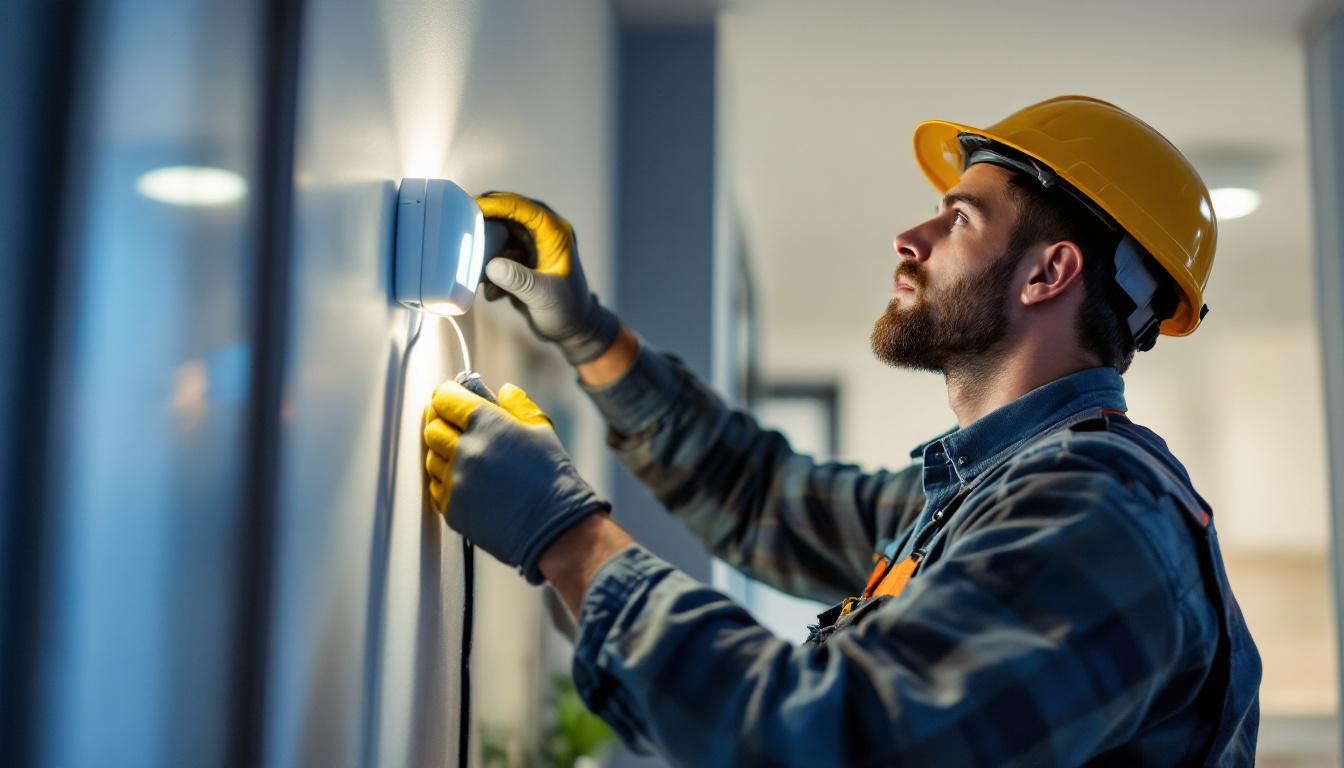
In the ever-evolving world of lighting design and installation, low voltage light sensors have emerged as essential tools for lighting contractors. These sensors not only enhance energy efficiency but also improve the overall functionality of lighting systems. For lighting contractors looking to master this technology, understanding the intricacies of low voltage light sensors is crucial. This article will delve into the resources and knowledge needed to excel in this area, providing insights and practical advice for professionals in the field.
Low voltage light sensors are devices that detect ambient light levels and adjust lighting accordingly. They play a vital role in automating lighting systems, ensuring that lights are only used when necessary. This not only conserves energy but also extends the lifespan of lighting fixtures. For lighting contractors, mastering these sensors involves understanding their types, functionalities, and applications.
There are several types of low voltage light sensors, each designed for specific applications. The most common types include:
Understanding the differences between these types of sensors allows lighting contractors to select the most suitable option for their projects, ensuring optimal performance and energy efficiency. Moreover, the integration of these sensors into smart home systems has revolutionized the way we manage lighting. With the advent of IoT technology, many modern sensors can now communicate with other smart devices, allowing for even more sophisticated control over lighting environments.
The operation of low voltage light sensors is based on the principles of photometry. These sensors typically consist of a light-sensitive component, a control circuit, and an output mechanism. When ambient light levels change, the light-sensitive component detects this variation and sends a signal to the control circuit, which then adjusts the lighting output accordingly.
For instance, in a photocell, the sensor will turn on outdoor lights at dusk and turn them off at dawn. In contrast, motion sensors will activate lights only when movement is detected, ensuring that energy is not wasted in unoccupied spaces. Additionally, many modern sensors are equipped with adjustable sensitivity settings, allowing users to customize their response to light levels or motion detection. This flexibility is particularly beneficial in environments where lighting needs may vary throughout the day, such as in offices with large windows that receive different amounts of sunlight at different times.
Furthermore, the installation of these sensors can lead to significant cost savings over time. By reducing unnecessary energy consumption, businesses and homeowners alike can see a marked decrease in their electricity bills. In commercial settings, where lighting can account for a substantial portion of energy usage, the implementation of low voltage light sensors can enhance sustainability efforts and contribute to greener building certifications. As the demand for energy-efficient solutions continues to rise, understanding and utilizing these sensors will become increasingly essential for lighting professionals.
Integrating low voltage light sensors into lighting designs offers numerous benefits. For lighting contractors, understanding these advantages can enhance project proposals and client satisfaction.
One of the most significant benefits of low voltage light sensors is their ability to promote energy efficiency. By ensuring that lights are only on when needed, these sensors can significantly reduce energy consumption. This not only lowers utility bills for clients but also contributes to environmental sustainability.
In commercial settings, where lighting can account for a substantial portion of energy costs, the implementation of low voltage light sensors can lead to significant savings. Contractors can leverage this advantage to attract environmentally conscious clients and promote energy-efficient solutions.
Low voltage light sensors also contribute to enhanced comfort and safety in various environments. In residential settings, motion sensors can illuminate pathways and entryways when someone approaches, providing a sense of security and convenience. In commercial spaces, daylight harvesting sensors can create a more pleasant atmosphere by maintaining consistent light levels, reducing glare and eye strain.
By incorporating these sensors into lighting designs, contractors can create spaces that are not only functional but also welcoming and safe for occupants.
While low voltage light sensors offer numerous benefits, there are several key considerations that lighting contractors must keep in mind when integrating them into their projects.
Proper installation and positioning of low voltage light sensors are critical for optimal performance. For instance, photocells should be placed in locations where they can accurately measure ambient light levels without interference from artificial light sources. Similarly, motion sensors should be positioned to cover the desired area effectively, avoiding obstructions that may hinder their detection capabilities.
Contractors should also consider the specific requirements of each sensor type. For example, some motion sensors may require a line of sight to detect movement effectively, while others may be more versatile in their placement. Understanding these nuances can help contractors achieve the best results for their clients.
When integrating low voltage light sensors into existing lighting systems, compatibility is a crucial factor. Contractors should ensure that the sensors they choose are compatible with the current fixtures and control systems. This may involve checking voltage requirements, wiring configurations, and control protocols.
In some cases, retrofitting existing systems with low voltage light sensors may require additional components or modifications. Contractors should be prepared to assess the current setup and make recommendations for any necessary upgrades to ensure seamless integration.
To truly master low voltage light sensors, lighting contractors can benefit from a variety of resources. These include educational materials, industry publications, and hands-on training opportunities.
Many organizations offer online courses and webinars focused on low voltage lighting technologies. These courses often cover topics such as sensor types, installation techniques, and best practices for integrating sensors into lighting designs. Participating in these educational opportunities can enhance a contractor’s knowledge and skills, making them more competitive in the field.
Additionally, many manufacturers of low voltage light sensors provide training sessions and resources on their products. Contractors should take advantage of these offerings to gain insights directly from the source.
Staying informed about the latest trends and advancements in low voltage lighting technology is essential for contractors looking to excel in their field. Industry publications and journals often feature articles, case studies, and product reviews related to low voltage light sensors.
Subscribing to these publications can provide valuable insights into emerging technologies, helping contractors stay ahead of the curve and make informed decisions for their projects.
Examining successful implementations of low voltage light sensors can provide valuable insights for lighting contractors. These case studies highlight the practical applications of sensors and the benefits they bring to various projects.
In residential settings, a contractor recently completed a project that involved installing motion sensors in a large home. The sensors were strategically placed in hallways, entryways, and outdoor areas. As a result, the homeowner experienced a significant reduction in energy costs while enjoying enhanced security and convenience.
This project not only showcased the effectiveness of motion sensors but also highlighted the importance of proper positioning and installation. The contractor’s attention to detail ensured that the sensors functioned optimally, providing the homeowner with peace of mind and satisfaction.
In a commercial office building, a contractor implemented daylight harvesting sensors to optimize the use of natural light. By installing these sensors in conjunction with the existing lighting system, the contractor was able to create a more comfortable work environment while reducing energy consumption.
The success of this project demonstrated the value of integrating low voltage light sensors into commercial spaces. The building owner reported increased employee satisfaction and productivity, further emphasizing the benefits of well-designed lighting solutions.
The field of low voltage light sensors is continuously evolving, with new technologies and trends emerging regularly. Lighting contractors should stay informed about these developments to remain competitive and offer cutting-edge solutions to their clients.
One of the most significant trends in low voltage lighting technology is the integration of smart lighting systems. These systems allow for greater control and customization of lighting environments, often incorporating low voltage light sensors as a key component. Contractors who understand how to integrate smart lighting solutions will be better positioned to meet the demands of modern clients.
Smart lighting systems can include features such as remote control via smartphone apps, automated scheduling, and integration with other smart home devices. By mastering these technologies, contractors can offer clients enhanced convenience and energy efficiency.
Advancements in sensor technology are also shaping the future of low voltage light sensors. Newer models may incorporate features such as enhanced sensitivity, improved range, and better resistance to environmental factors. Staying updated on these advancements allows contractors to select the best products for their projects and provide clients with the most effective solutions.
Mastering low voltage light sensors is essential for lighting contractors looking to enhance their expertise and deliver high-quality solutions to clients. By understanding the types of sensors, their benefits, and the key considerations for installation and integration, contractors can position themselves as leaders in the industry.
Utilizing available resources such as online courses, industry publications, and case studies can further enhance knowledge and skills. As technology continues to evolve, staying informed about future trends will ensure that contractors remain competitive and can provide innovative solutions that meet the needs of their clients.
In a world increasingly focused on energy efficiency and smart technology, low voltage light sensors represent a significant opportunity for lighting contractors to excel and provide exceptional value to their clients.
Ready to elevate your lighting projects with the latest in low voltage light sensor technology? Look no further than LumenWholesale for a comprehensive selection of spec-grade lighting products at unbeatable wholesale prices. We provide the tools you need to stay ahead in the competitive world of lighting design, ensuring every installation is as energy-efficient and cost-effective as possible. With free shipping on bulk orders and no hidden fees, LumenWholesale is your go-to source for quality lighting without the markup. Discover how we blend quality, affordability, and convenience to enhance your lighting solutions. Visit us now for Wholesale Lighting at the Best Value.

Explore the transformative impact of Christmas projections on the lighting industry, highlighting their rising popularity and innovative applications.

Discover the latest trend in lighting design with car-shaped light bulbs! This article offers expert advice for lighting contractors on how to incorporate these unique bulbs into projects, enhancing aesthetics and client satisfaction.

Discover the importance of IP65 wet-rated lighting for greenhouses and why staying updated is crucial for lighting contractors.

Discover the key challenges lighting contractors face when installing LED solar outdoor lights.